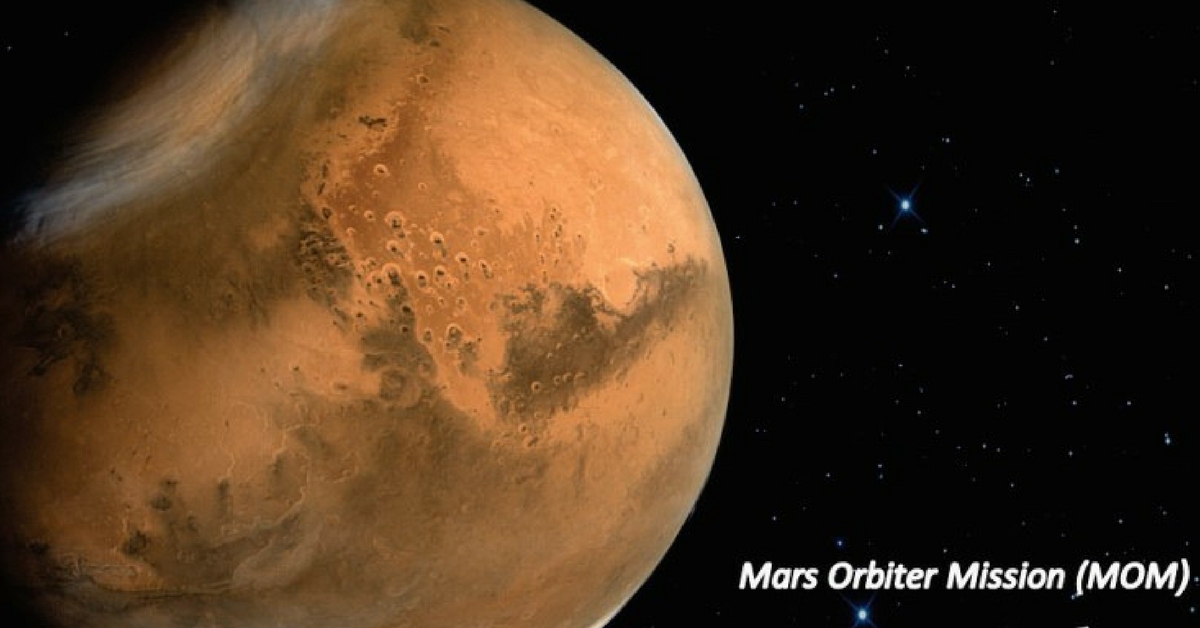The Indian Space Research Organisation’s (ISRO) first interplanetary mission, popularly known as Mangalyaan or Mars Orbiter Mission (MOM), celebrated 1,000 earth days in its orbit on Monday, surpassing its designed mission life of six months.
Mangalyaan made India the first Asian nation to reach Mars orbit, and the first nation in the world to do so in its very first attempt. ISRO became the fourth space agency to reach Mars, after the Soviet space program, NASA, and the European Space Agency.
“The satellite is in good health and continues to work as expected. Scientific analysis of the data received from the Mars Orbiter spacecraft is in progress,” ISRO said in an official statement.
Important things to know about Mangalyaan or MOM:
1. Mars Orbiter Mission (MOM), launched on November 5, 2013, by PSLV-C25, got inserted into Martian orbit on September 24, 2014 in its very first attempt.

2. The primary objective of MOM is to develop the technologies required for designing, planning, management and operations of an interplanetary mission.
3. The secondary objective is to explore the Red Planet’s surface features, morphology (topography), mineralogy and Martian atmosphere using indigenous scientific instruments.
4. The total cost of the mission being approximately ₹450 Crore (US$73 million), makes it the least-expensive Mars mission till date.
It is roughly one-tenth the cost of the $671 million that NASA paid for its Maven Mars orbiter mission.
5. Apart from being credited for its cost-effectiveness, the MOM is praised for its short period of realisation, economical mass-budget and miniaturisation of five heterogeneous science payloads, etc.
Mars Orbiter Mission Completes 1000 Days in Orbithttps://t.co/DV3ymbwFkw
— ISRO (@isro) June 19, 2017
6. The five scientific tools on board Mangalyaan include a color imaging camera, a thermal infrared spectrometer to measure the chemical composition of the surface, and instruments to assess the Mars atmosphere, including a methane detector.
Read more: 11 ‘Out-Of-This-World’ Photos Sent by Mangalyaan That Made Us Go WOW!
7. The Mars Colour Camera has produced more than 715 images, adding to the data from the mission’s first year, released last September.
Mars Atlas was prepared and made available on ISRO website for public use.
#HappyNewYear, dear earthlings! North pole looks wicked cool here! pic.twitter.com/f2cLXrBSAT
— ISRO's Mars Orbiter (@MarsOrbiter) January 1, 2016
8. The MOM survived a communication ‘blackout’ because of solar conjunction from June 2, 2015 to July 2, 2015.
It also made it through a ‘whiteout’ geometry from May 18, 2016 to May 30, 2016.
(The ‘whiteout’ is a period when the Sun is between Mars and Earth, which makes all communication impossible between the Earth and Mars due to high solar radiation.)
First snap after coming out of blackout. http://t.co/od7qyPeGB3 pic.twitter.com/7X5xuClCCm
— ISRO's Mars Orbiter (@MarsOrbiter) July 24, 2015
Even though the MOM was only set to circle Mars about 500 km (310 miles) from its surface for only six months, it still continues to collect data and send it back to Earth till date.
“If there is no trouble forthcoming, the spacecraft can hold good for at least another 5-6 years,” ISRO chairman AS Kiran Kumar told Express.
“India is already planning a return to Mars with Mangalyaan 2.0 and a new mission to Venus that will only happen after 2020,” the Hindustan Times reported.
Like this story? Or have something to share?
Write to us: contact@thebetterindia.com
Connect with us on Facebook and Twitter.
NEW: Click here to get positive news on WhatsApp!
If you found our stories insightful, informative, or even just enjoyable, we invite you to consider making a voluntary payment to support the work we do at The Better India. Your contribution helps us continue producing quality content that educates, inspires, and drives positive change.
Choose one of the payment options below for your contribution-
By paying for the stories you value, you directly contribute to sustaining our efforts focused on making a difference in the world. Together, let's ensure that impactful stories continue to be told and shared, enriching lives and communities alike.
Thank you for your support. Here are some frequently asked questions you might find helpful to know why you are contributing?

